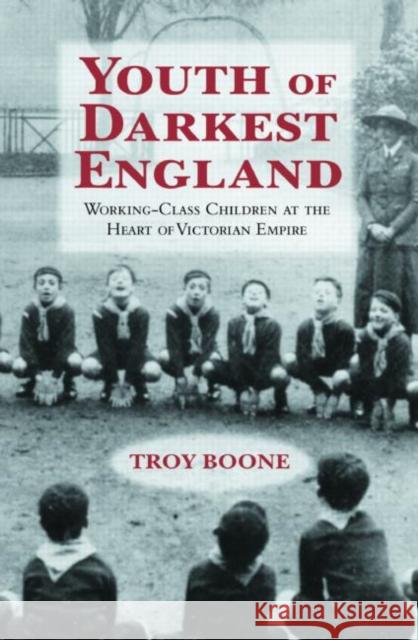Youth of Darkest England : Working-Class Children at the Heart of Victorian Empire » książka
Youth of Darkest England : Working-Class Children at the Heart of Victorian Empire
ISBN-13: 9780415972628 / Angielski / Twarda / 2004 / 235 str.
Youth of Darkest England examines the representation of English working-class children-the youthful inhabitants of the poor urban neighborhoods that a number of writers dubbed "darkest England"-in Victorian and Edwardian imperialist literature. In particular, the book focuses on how the writings for and about youth undertook an ideological project to enlist working class children into the British imperial enterprise.
It is generally assumed that the dominant middle-classes succeeded in recruiting the working-class youth and thus easily manipulating these young people for nationalist purposes. However, Boone demonstrates convincingly that this was not the case and that the British working-class youth resisted a nationalist identification process that tended to eradicate or obfuscate class differences.
In the first chapter he explores the contradictory aspect of imperialist writings through a careful study of Henry Mayhew's "London Labour and the London Poor." In the next two chapters he examines the "penny bloods," cheap adventure stories, which contained subversive tendencies and were condemned by the middle class but appreciated and grasped by working class youth. As a counter to the "penny hoods," new more conservative magazines were developed. In the chapters that follow Boone carefully analyzes the middle-class representations of working-class culture such as William Booth's "In Darkest England and the Way Out" to show how this culture was linked to degeneration and needed to be regenerated by middle-class visionaries. Most of the schemes or organizations for "reforming" or "co-opting" working class youth such as the scout organizations involved an instrumentalization ofthe working-class young which resisted this process through World War I.
Lucidly written and thoroughly researched, Youth of Darkest England is a major contribution to our understanding of youth culture and children's literature in the nineteenth century.











